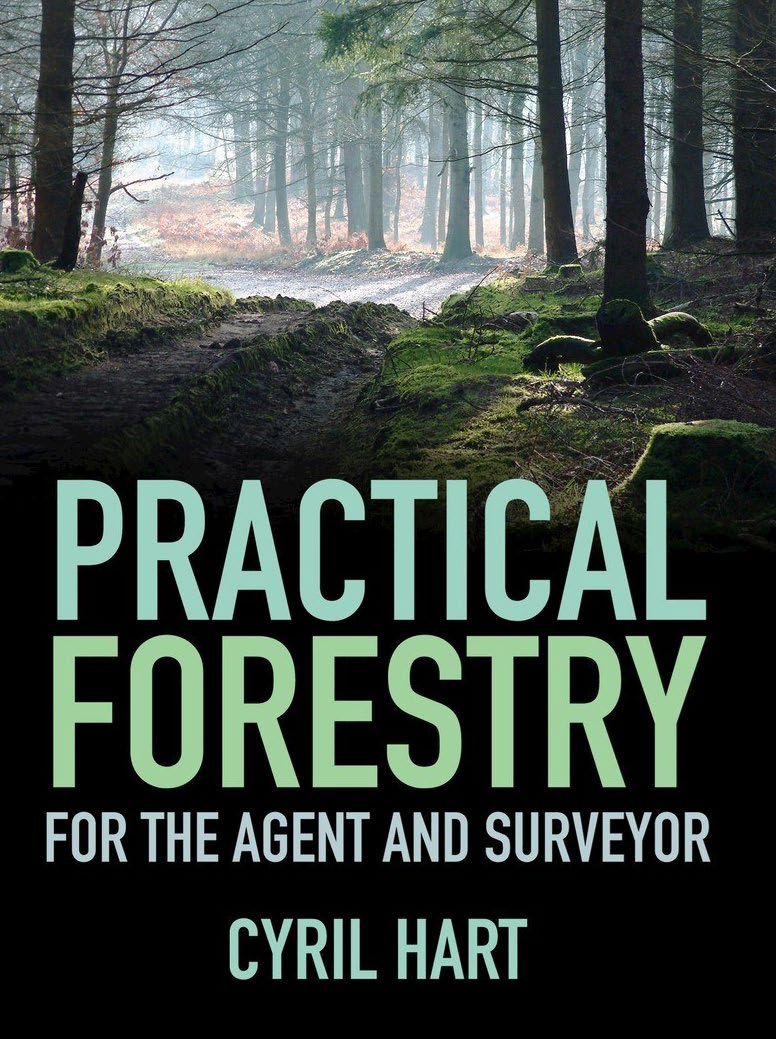From Living Woods issue 63
Woodland agent RUTH FELTHAM, no stranger to silvicultural
terminology and a hands-on woodland manager, reviews a 60-year-old
forestry classic
 PRACTICAL FORESTRY FOR THE
PRACTICAL FORESTRY FOR THE
AGENT AND SURVEYOR
Cyril Hart
The History Press
Paperback (4th Edition)
696 pages
RRP £40
ISBN 9780750999410
Upon first appearance this
encyclopaedic tome could also be
titled ‘…and not for the fainthearted’.
Heralded as a trusted companion to
forestry students and experts, it is described
in reviews as the ‘definitive guide to forestry’,
and is aimed at private growers managing
woodland for commercial purposes.
As you might expect, Practical Forestry
authoritatively addresses the question of
valuation, but it is also an extremely useful
reference book which is easily navigated and
is surprisingly accessible. Colourful photos
(such as the botanical features of four
commonly planted commercial broadleaves),
figures and illustrations (specifications for
rabbit, stock and deer fencing, for example),
and tables (such as the costs of road
haulage) pepper the book throughout and
provide digestible nuggets of expertise.
Despite the incredible depth and detail
of the topics covered, the book does not
assume that the reader has significant prior
knowledge or understanding of forestry.
For example, a list of abbreviations for
Economics and Mensuration is given at
the start of the book. For those who have
read a management plan for the first time,
abbreviations such as DBH, YC and OB are
then demystified and explained clearly.
In terms of content, Practical Forestry
starts by looking at native and exotic
trees, introduces forestry concepts such
as identification and measurement, raising
stock and genetics. The book continues
with a deep dive into the forest ecosystems
(with a focus on climate and soils), which in
turn informs species choices, covered in the
following chapter.
Establishment and costs of plantations,
aftercare of plantations, silvicultural systems
and thinning are all covered in the next
chapters. The timber industry is then
explored, with sections on properties
of timber, quality and grading, harvesting
and restocking, forest planning, forest
management (including non-wood benefits
such as recreation, wildlife conservation and
sporting pursuits).
Following the chapters on the economics
and support of private forestry (covering
grants, subsidies and taxation), the book
closes with chapters on woodland accounts,
forestry valuation and finally investment in
private forestry.
The book was originally published
in 1962 and is now in its fourth edition.
This information alone serves as testament
to the invaluable content it offers. For
those who want to understand more
about working, managing and preserving
Britain’s wonderful woodlands, it should be
considered a worthwhile investment.